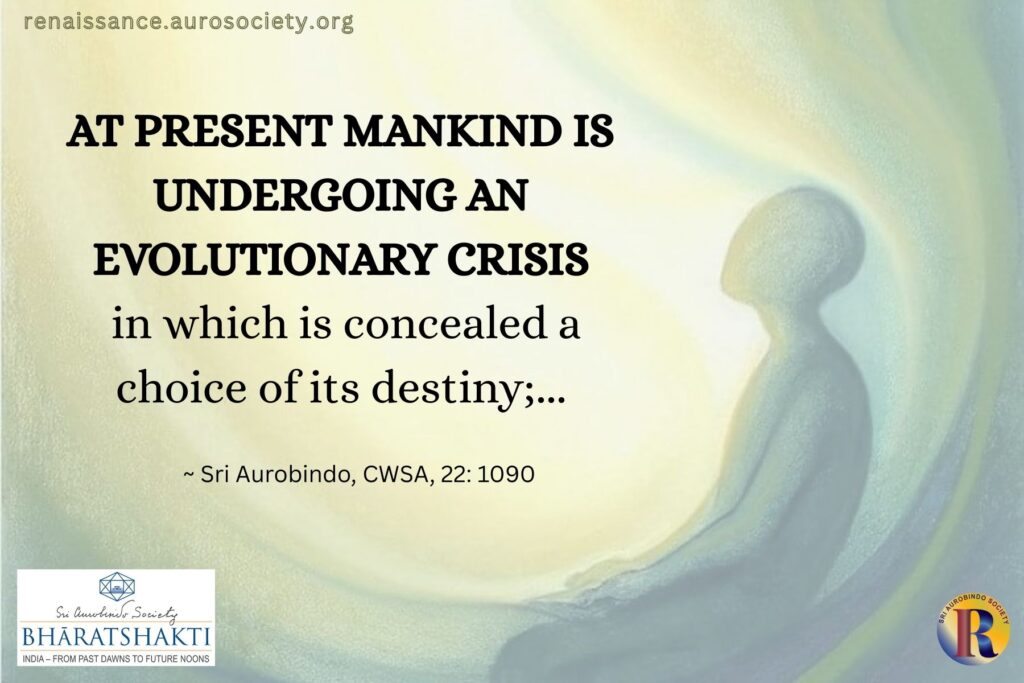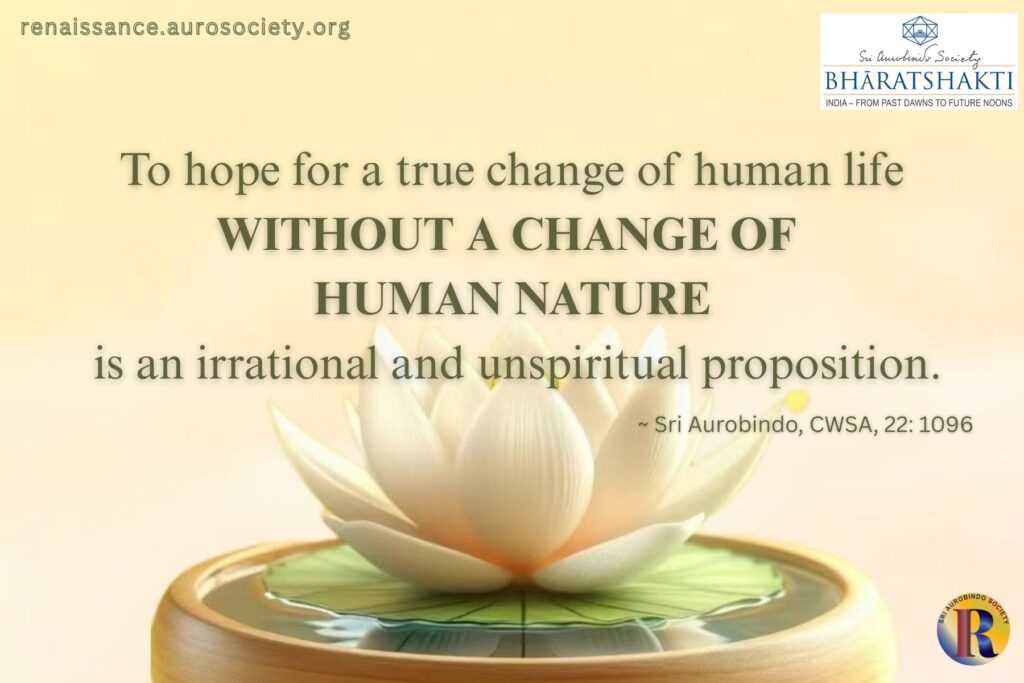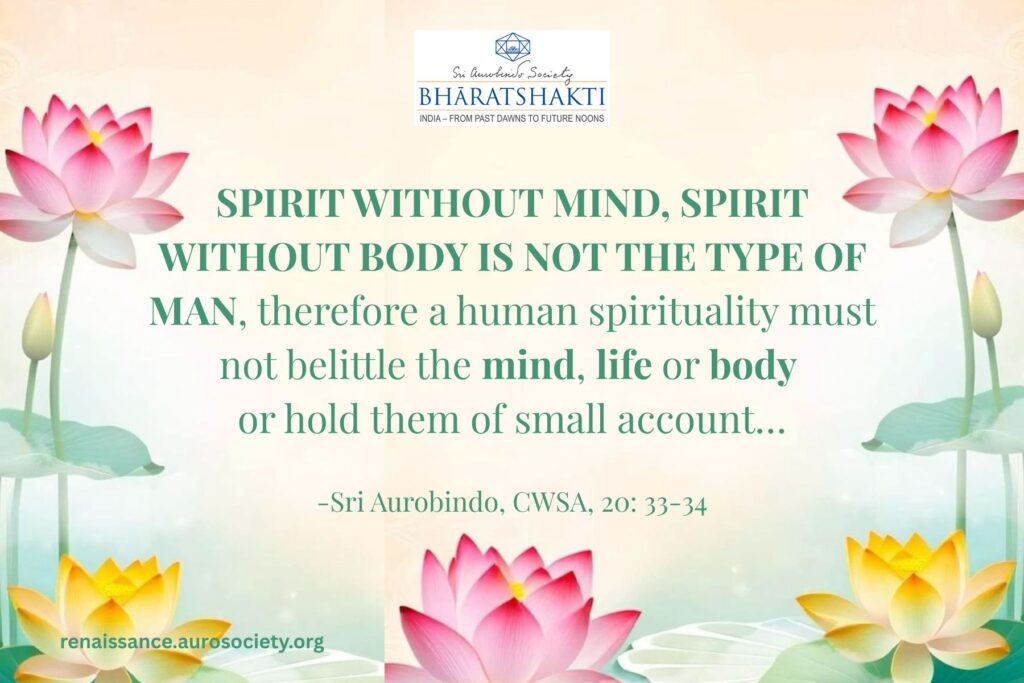Editor’s note: Given that concentration is such an important aspect of all spiritual pursuit and life, in various works of Sri Aurobindo and the Mother we find a great body of deep insights and detailed explanations. We present here a small selection of some practical advice and guidance given by Sri Aurobindo with the hope that readers will be curious to read more at the references given below. We have made a few minor formatting revisions for the purpose of this digital presentation.
***
Do not be in haste
All Yoga proceeds in its method by three principles of practice;
first, purification, that is to say, the removal of all aberrations, disorders, obstructions brought about by the mixed and irregular action of the energy of being in our physical, moral and mental system;
secondly, concentration, that is to say, the bringing to its full intensity and the mastered and self-directed employment of that energy of being in us for a definite end;
thirdly, liberation, that is to say, the release of our being from the narrow and painful knots of the individualised energy in a false and limited play, which at present are the law of our nature.
***
Yoga is a rapid and concentrated conscious evolution of the being, but however rapid, even though it may effect in a single life what in an unassisted Nature might take centuries and millenniums or many hundreds of lives, still all evolution must move by stages; even the greatest rapidity and concentration of the movement cannot swallow up all the stages or reverse natural process and bring the end near to the beginning.
A hasty and ignorant mind, a too eager force easily forget this necessity; they rush forward to make the supermind an immediate aim and expect to pull it down with a pitchfork from its highest heights in the Infinite. This is not only an absurd expectation but full of danger.
For the vital desire may very well bring in an action of dark or vehement vital powers which hold out before it a promise of immediate fulfilment of its impossible longing; the consequence is likely to be a plunge into many kinds of self-deception, a yielding to the falsehoods and temptations of the forces of darkness, a hunt for supernormal powers, a turning away from the Divine to the Asuric nature, a fatal self-inflation into an unnatural unhuman and undivine bigness of magnified ego.
***
One has to know about Overmind and Supermind but there should be no ambition to reach them—it should be regarded as a natural end of the sadhana which will come of itself. The concentration should be all on the immediate step—whatever is being done at the time. So have the working of the Power and let it work all out step by step.
Concentration is necessary
***
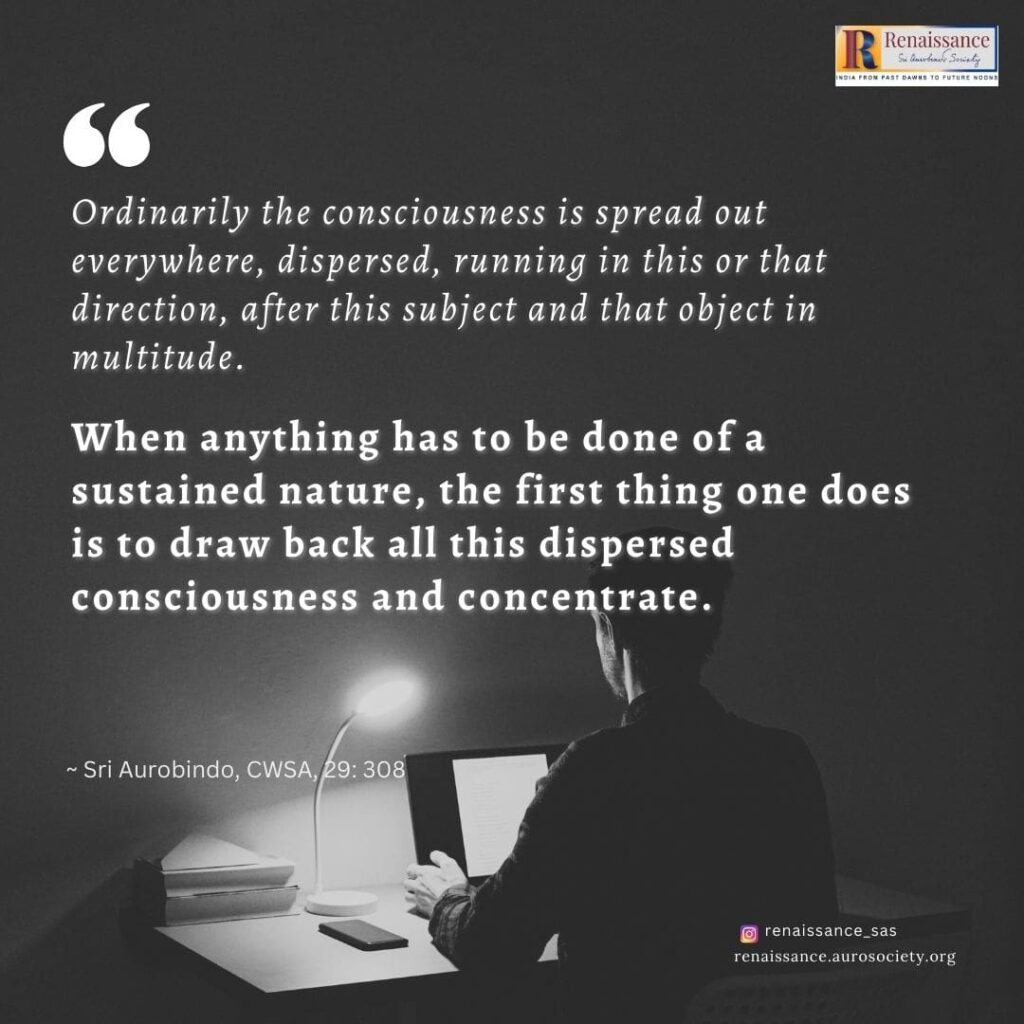
In the beginning for a long time concentration is necessary even by effort because the nature, the consciousness are not ready. Even then the more quiet and natural the concentration, the better.
But when the consciousness and nature are ready, then concentration must become spontaneous and easily possible without effort at all times. Even at last it becomes the natural and permanent condition of the being—it is then no longer concentration, but the settled poise of the soul in the Divine.
It is true that to be concentrated and do an outward action at the same time is not at first possible. But that too becomes possible. Either the consciousness divides into two parts, one the inner poised in the Divine, the other the outer doing the outer work—or else the whole is so poised and the force does the work through the passive instrument.
Concentrate to open the concealed consciousness
There is within you a psychic being which is divine, directly a part of the Mother, pure of all these defects. It is covered and concealed by the ordinary consciousness and nature, but when it is unveiled and able to come forward and govern the being, then it changes the ordinary consciousness, throws all these undivine things out and changes the outer nature altogether.
That is why we want the sadhaks to concentrate, to open this concealed consciousness—it is by concentration of whatever kind and the experiences it brings that one opens and becomes aware within and the new consciousness and nature begin to grow and come out.
Of course we want them also to use their will and reject the desires and wrong movements of the vital, for by doing that the emergence of the true consciousness becomes possible. But rejection alone cannot succeed; it is by rejection and by inner experience and growth that it is done.
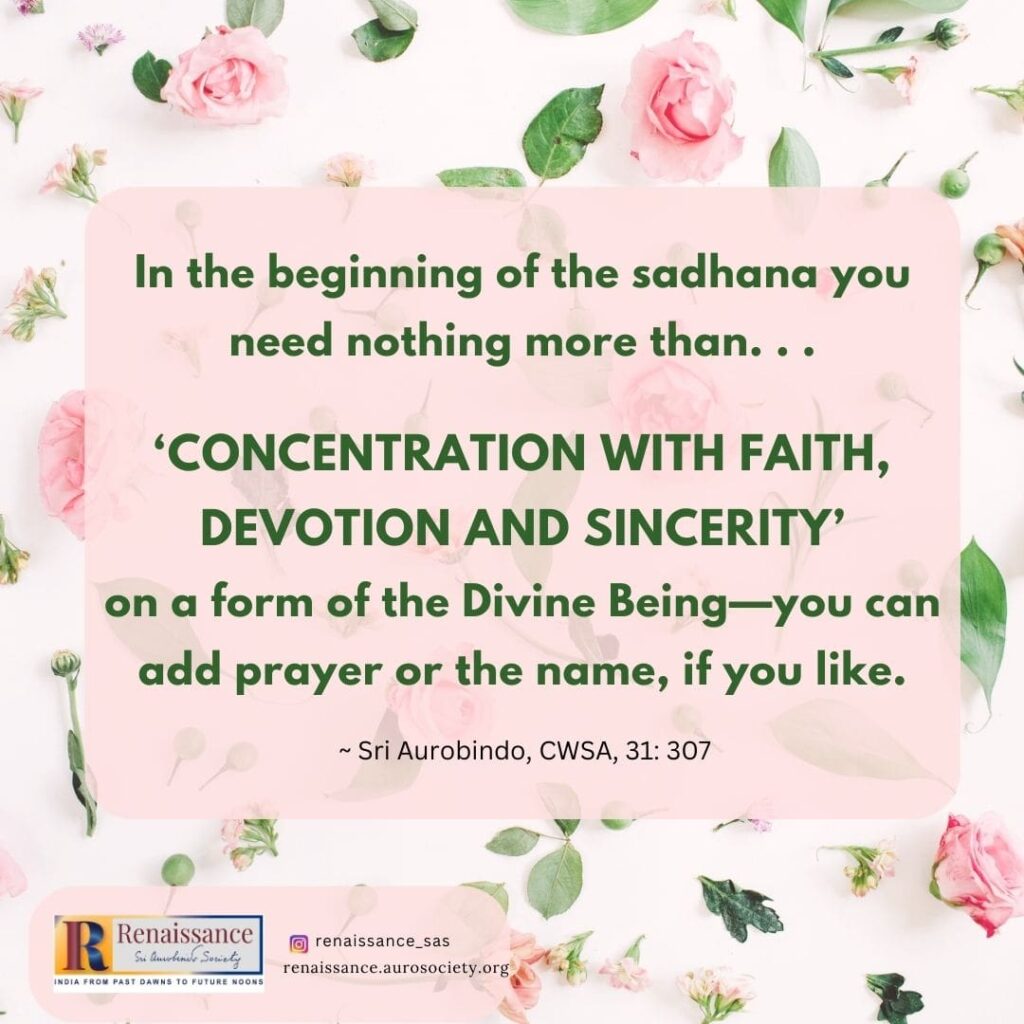
***
The basis of life here is wholly spiritual. An inner discipline is given, but it is on broad lines allowing each individual the necessary freedom for his nature and temperament to grow and change spontaneously.
Broadly, the sadhana consists of a progressive surrender of oneself—inward and based upon it the outward also—to the Guru, to the Divine; meditation, concentration, work, service—all these are means for a self-gathering in all one’s movements with the sole aim of delivering oneself into the hands of a Higher Power for being worked on and led towards the Goal.
***
Pranayam and Asans, concentration, worship, ceremonies, religious practice are not themselves Yoga but only a means towards Yoga. Nor is Yoga a difficult or dangerous path, it is safe and easy to all who take refuge with the Inner Guide and Teacher. All men are potentially capable of it, for there is no man who has not strength or faith or love developed or latent in his nature, and any one of these is a sufficient staff for the Yogin.
All cannot, indeed, reach in a single life the highest in this path, but all can go forward; and in proportion as a man advances he gets peace, strength and joy. And even a little of this dharma delivers man or nation out of great fear.
***
There are two main things to be secured as the foundations of sadhana—the opening of the psychic being and the realisation of the Self above. For the opening of the psychic being, concentration on the Mother and self-offering to her are the direct way.
The growth of Bhakti which you feel is the first sign of the psychic development. A sense of the Mother’s presence or force or the remembrance of her supporting and strengthening you is the next sign.
Eventually, the soul within begins to be active in aspiration and psychic perception guiding the mind to the right thoughts, the vital to the right movements and feelings, showing and rejecting all that has to be put away and turning the whole being in all its movements to the Divine alone.
***
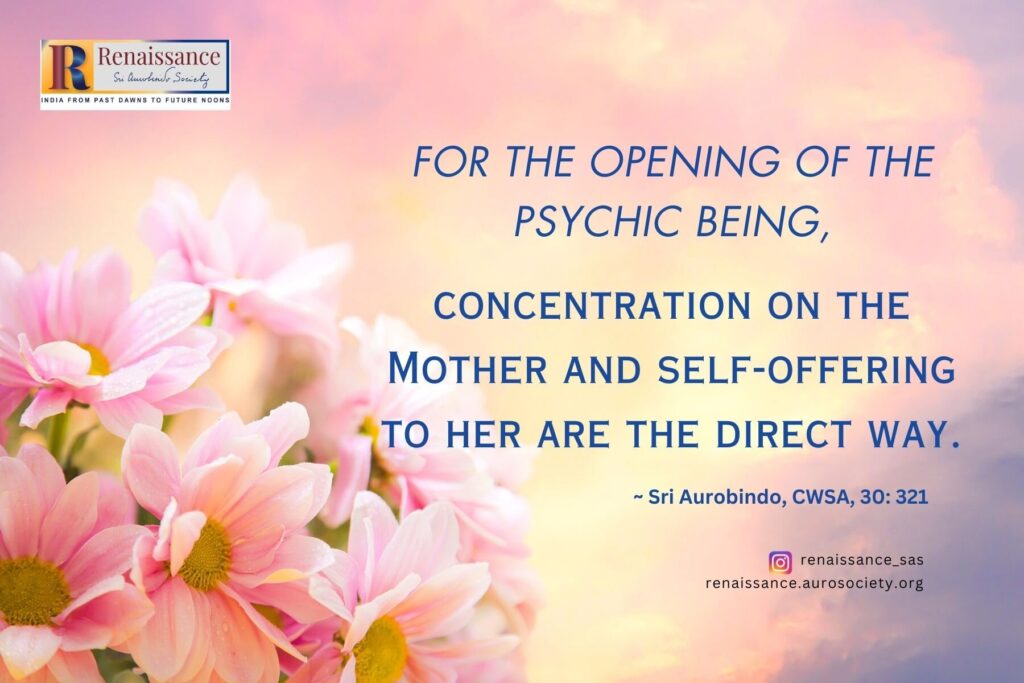
***
How to develop concentration
The first step in concentration must be always to accustom the discursive mind to a settled unwavering pursuit of a single course of connected thought on a single subject and this it must do undistracted by all lures and alien calls on its attention.
Such concentration is common enough in our ordinary life, but it becomes more difficult when we have to do it inwardly without any outward object or action on which to keep the mind; yet this inward concentration is what the seeker of knowledge must effect.
Nor must it be merely the consecutive thought of the intellectual thinker, whose only object is to conceive and intellectually link together his conceptions. It is not, except perhaps at first, a process of reasoning that is wanted so much as a dwelling so far as possible on the fruitful essence of the idea which by the insistence of the soul’s will upon it must yield up all the facets of its truth.
Thus if it be the divine Love that is the subject of concentration, it is on the essence of the idea of God as Love that the mind should concentrate in such a way that the various manifestation of the divine Love should arise luminously, not only to the thought, but in the heart and being and vision of the sadhaka.
The thought may come first and the experience afterwards, but equally the experience may come first and the knowledge arise out of the experience. Afterwards the thing attained has to be dwelt on and more and more held till it becomes a constant experience and finally the dharma or law of the being.
***
Yet it is certain that it is only by the stilling of the lower that the higher gets full play. So long as the body and the vital desires are active the mind is necessarily distracted and it is only when the body is forgotten and the vital part consents to quietude that a man can concentrate himself in thought and follow undisturbed the consecutive development whether of a train of reasoning or a train of inspiration.
***
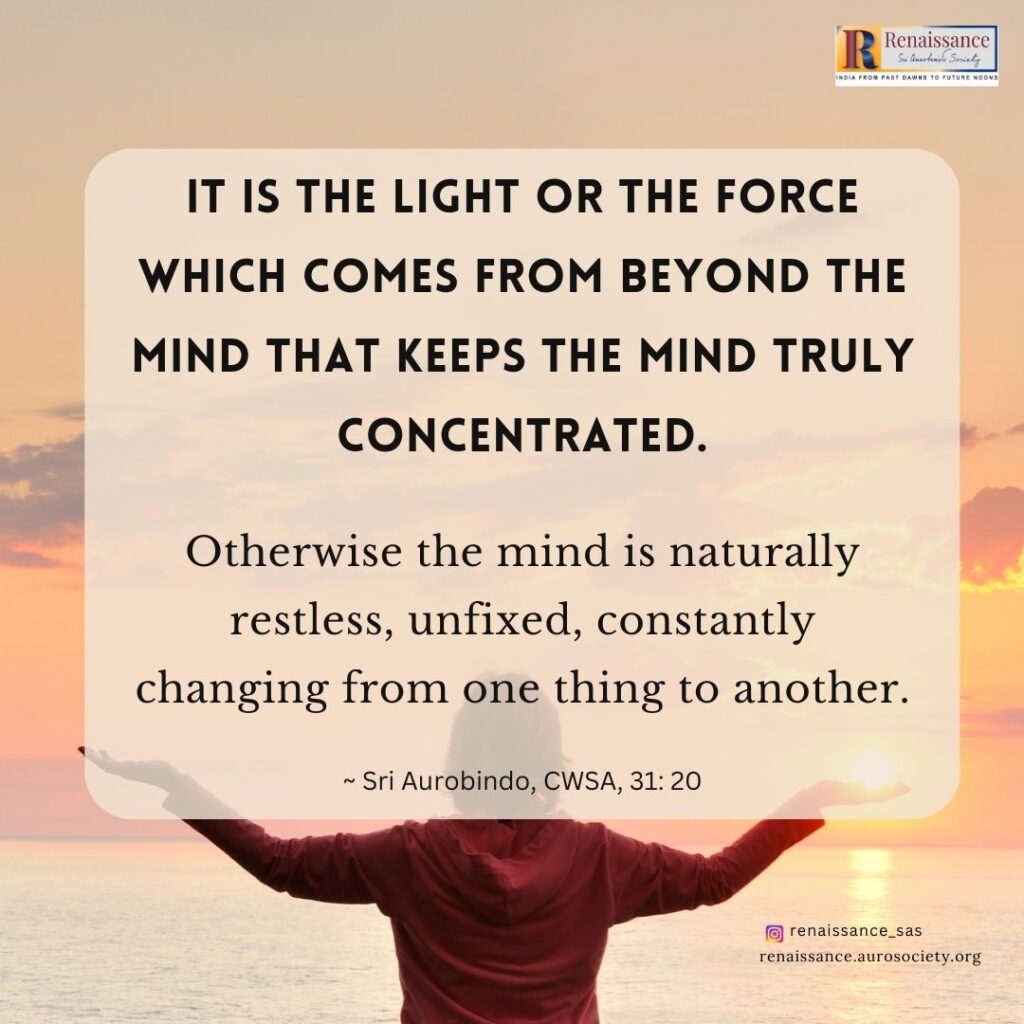
***
Practicing an inner isolation
It is not absolutely necessary to abandon the ordinary life in order to seek after the Light or to practise Yoga. This is usually done by those who want to make a clean cut, to live a purely religious or exclusively inner and spiritual life, to renounce the world entirely and to depart from the cosmic existence by cessation of the human birth and a passing away into some higher state or into the transcendental Reality.
Otherwise it is only necessary when the pressure of the inner urge becomes so great that the pursuit of the ordinary life is no longer compatible with the pursuit of the dominant spiritual objective. Till then what is necessary is a power to practise an inner isolation, to be able to retire within oneself and concentrate at any time on the necessary spiritual purpose.
There must also be a power to deal with the ordinary outer life from a new inner attitude and one can then make the happenings of that life itself a means for the inner change of nature and the growth in spiritual experience.
***
To have no contact with people and shut oneself entirely is not healthy. But one can for a time diminish outward contacts so as to concentrate.
***
It is quite possible for you to do sadhana at home and in the midst of your work—many do so. What is necessary at the beginning is to remember the Mother as much as possible, to concentrate on her in the heart for a time every day, if possible thinking of her as the Divine Mother, to aspire to feel her there within you, offer her your works and pray that from within she may guide and sustain you.
This is a preliminary stage which often takes long, but if one goes through it with sincerity and steadfastness, the mentality begins little by little to change and a new consciousness opens in the sadhak which begins to be aware more and more of the Mother’s presence within, of her working in the nature and in the life or of some other spiritual experience which opens the gate towards realisation.
***
Concentration on the Divine
The God-lover advances constantly towards this ultimate necessity of our birth in cosmos through a concentrated love and adoration by which he makes the supreme and universal Divine the whole object of his living—not either egoistic terrestrial satisfaction or the celestial worlds—and the whole object of his thought and his seeing.
To see nothing but the Divine, to be at every moment in union with him, to love him in all creatures and have the delight of him in all things is the whole condition of his spiritual existence. His God-vision does not divorce him from life, nor does he miss anything of the fullness of life; for God himself becomes the spontaneous bringer to him of every good and of all his inner and outer getting and having, yoga-kṣemaṁ vahāmyaham.
***
Why is it selfishness [to be concentrated on the Divine]?
Selfishness is to live for oneself and not for something greater than the self. To be concentrated on the Divine at all times is to get out of the personal self and its aims into something greater and serve the aims of that greater Existence. It is no more selfishness than to live for others always would be selfishness.
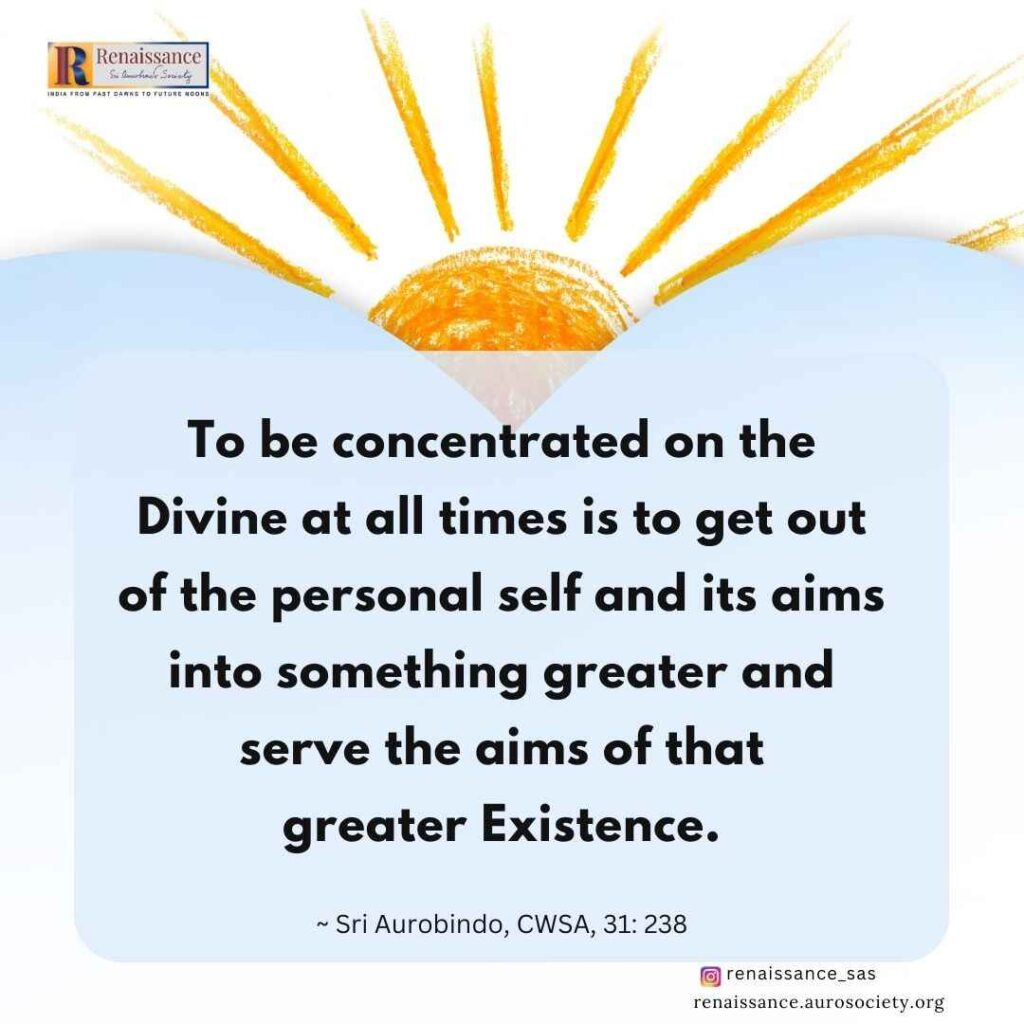
***
…the Ishta Devata on whom the seeker concentrates is a conscious Personality of the Divine answering to the needs of his own personality and showing to him as in a representative image what the Divine is or at least pointing him through itself to the Absolute.
***
If we concentrate only on one aspect and treat it as the whole, we illustrate the story of the blind men and the elephant; each of the blind inquirers touched a different part and concluded that the whole animal was some object resembling the part of which he had had the touch.
An experience of some one aspect of the Infinite is valid in itself; but we cannot generalise from it that the Infinite is that alone, nor would it be safe to view the rest of the Infinite in the terms of that aspect and exclude all other view-points of spiritual experience.
The Infinite is at once an essentiality, a boundless totality and a multitude; all these have to be known in order to know truly the Infinite. . .
A whole knowledge must be there and the reason must become plastic enough to look at all sides, all aspects and seek through them for that in which they are one.
Thus too, if we see only the aspect of self, we may concentrate on its static silence and miss the dynamic truth of the Infinite; if we see only the Ishwara, we may seize the dynamic truth but miss the eternal status and the infinite silence, become aware of only dynamic being, dynamic consciousness, dynamic delight of being, but miss the pure existence, pure consciousness, pure bliss of being.
If we concentrate on Purusha-Prakriti alone, we may see only the dichotomy of Soul and Nature, Spirit and Matter, and miss their unity.
Read:
On Concentration, Interest and Attention
~ Design: Beloo Mehra

